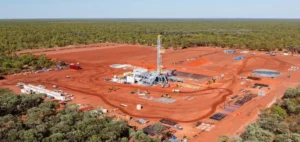Spain’s Enagas saw its profits fall in 2022 to 375.8 million euros, despite asset disposals and increased demand for gas transiting the Iberian peninsula. This figure is slightly below the Group’s targets, which were for earnings of between €380 and €390 million.
Impact of the regulatory framework
Enagas has been impacted by a new regulatory framework for market prices that has reduced its margins in the Spanish domestic market since it came into force at the beginning of 2021. However, the Group benefited from an increase in gas exports via France and Spanish port terminals for LNG, due to early preparations for winter.
European gas outlook
The gas market came under severe pressure in 2020 due to the war in Ukraine, leading to a dramatic rise in prices and prompting European countries to find alternative sources of supply from Russia. Spain is therefore a strategic country, as it is linked to the Algerian Medgaz gas pipeline field and has six major ports – more than any other European country.
Other positive factors underpinning Enagas’ results
Alongside exports, Enagas also benefited from asset sales: it sold its majority stake (45.4%) in the Quintero LNG group in Chile, 30% of its renewables subsidiary to Hy24 and 5% to Amancio Ortega – founder of Zara.






















